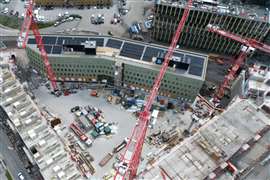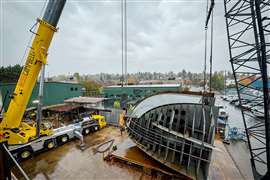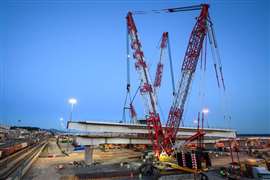ARA forecasts “soft landing” at Working at Height Conference
21 November 2024
Speaking at the inaugural Working at Height Conference in Nashville yesterday, the American Rental Association’s (ARA) chief economist said the US rental sector would drop, but it would not dive into negative territory.
“The story is that it is slowing down, but we think it’s going to be a soft landing,” said John W McClelland, who is also Vice President of Government Affairs and Chief Economist at the ARA.
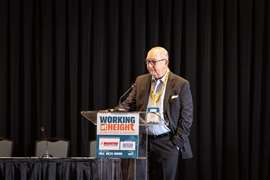 John W McClelland, Vice President of Government Affairs and Chief Economist at the ARA.
John W McClelland, Vice President of Government Affairs and Chief Economist at the ARA.
The day long conference, organised by Access Lift & Handlers (ALH) and IPAF, saw a wide range of industry experts sharing their views on topical subjects covering US market growth, safety, training and technology, followed by an awards ceremony in the evening - see the winners here.
McClelland said that in a survey of ARA members during the third quarter of 2024, the association found that 37% of respondents thought the situation for equipment rental was getting worse, while 47% thought it was getting better. This compares to 29% and 58%, respectively, in the same period of 2023.
Looking at total US equipment rental revenue over time the forecasted year-on-year growth is for it to slow from 8.2% this year to 4.8% by 2028. The intervening years will see 5.7% growth in 2025 and 4.4% in both 2026 and 2027.
Construction levels
The construction and industrial sectors are expected to see the lowest growth over the period, compared to general tool hire, which will remain stable. However, although the sector is forecasted to drop from 7.9% this year to 3.6% in 2025, it expected to even out and see an increase again in 2028 of 4.3%.
“[construction and industrial] is going to slow but there is no recession being forecasted even in our most negative outlook,” said McClelland.
This he added was partly due to the effects of Covid, which saw huge increases in machine orders post the pandemic, “and after a few years we are looking to that evening out.”
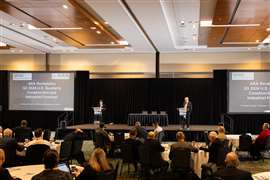 John McClelland and Lindsey Andserson, host of the Working at Height Conference.
John McClelland and Lindsey Andserson, host of the Working at Height Conference.
Combined, the total forecasted revenue for construction and industrial and general tool hire in 2028 is $94.4 billion, which McClelland said was significantly higher than this year’s forecasted figure of $78.2 billion, demonstrating how much the market will have risen despite slower growth levels.
One of the reasons for the more positive tool hire forecasts has been high interest rates, which have discouraged people from moving house. “What do you do in this situation?” asked McClelland, “you improve what you’re living in which means you go to Home Depot and other DIY stores, so tools is seeing a rise.”
Focusing on different areas of the country, McClelland said there were contrasts in performance. “Areas in the southeast are pretty hot and the northeast to mid-west are a bit cooler, but there are big populations in those areas that are bit slower. For example, Nevada is hot but there’s a lot fewer people in Nevada than new York.”
Real GDP in the country is also expected to tick down to 2.8% in 2024 and inches up to 2.9% in 2025, with residential investment falling, added McClelland.
In addition, Federal Government spending from the infrastructure Bill has come to an end. “Most of those funds have gone out, so the money going out now is at baseline levels. “
On the subject of housing start ups and home sales, the picture has been improving gradually, says McClelland, since the credit crash in 2008.
“The crisis crushed the housing market, and we have been inching our way back but not quite getting here. We’re turning over housing stock but not introducing more, as houses and rents increase.”
More will follow on the presentations at the Working at Height Conference.



